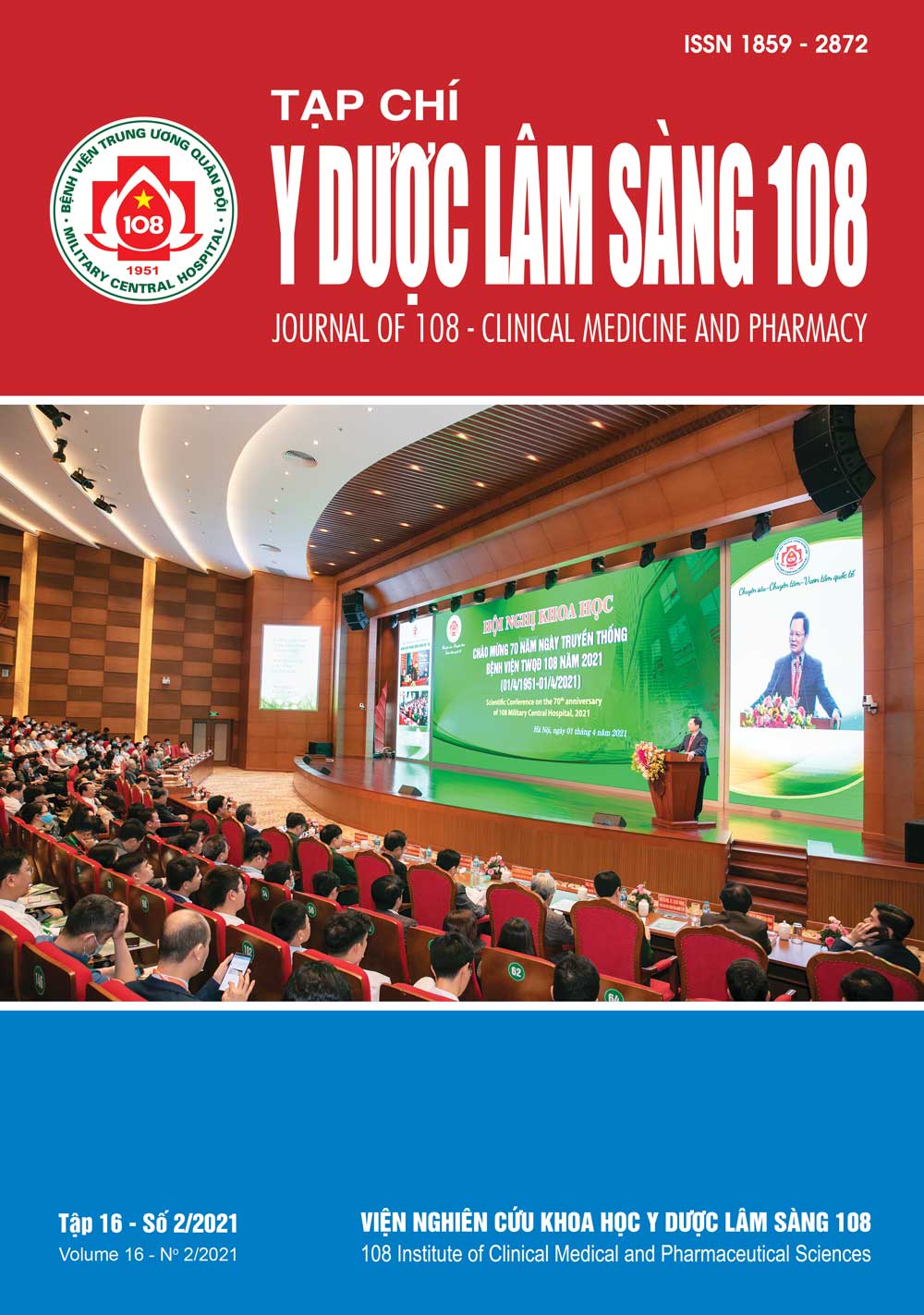Outcome of patients treated with loop electrosurgical excision procedure (LEEP) for high-grade squamous intraepithelial lesions (HSIL) at National Cancer Hospital
Main Article Content
Keywords
Abstract
Objective: To evaluate the outcome of high grade of squamous intraepithelial lesion (HSIL) treatment with loop electrosurgical excision procedure (LEEP). Subject and method: 198 patients with high-grade squamous intraepithelial lesions treated with LEEP at K Hospital from 01/2008 to 01/2018. Result: Patients had abnormal cytology and colposcopy results in 96.9% of cases. Pre-procedure histopathology had a 95.1% correct rate of CIN II lesions of the cervix. The average follow-up time was 62.7 months, relapse encountered 2/198 patients accounting for 1.0%. Complications were usually mild and uncommon. Rate of bleeding (3.5%), infection (0.5%). The most common remote complication was narrowing of the cervical hole (15.2%). Conclusion: LEEP in the treatment of high-grade squamous intraepithelial lesions is effective, ease of implementation, cheap equipment and low cost of follow-up and treatment. This technique preserves reproductive function in young women who have not had enough children.
Article Details
References
2. Nguyễn Quốc Trực, Lê Văn Xuân (2000) Chẩn đoán và điều trị các tổn thương tiền UT cổ tử cung. Tạp chí thông tin Y dược 8/2000 (chuyên đề Ung thư).
3. Phạm Việt Thanh (2009) Điều trị các tổn thương tân sinh trong biểu mô cổ tử cung độ II và III bằng phương pháp khoét chóp sử dụng vòng cắt đốt điện (LEEP). Tạp chí Y học thực hành số 3, tr. 9.
4. Hoàng Đức Vĩnh (2012) Đánh giá hiệu quả điều trị các tổn thương tại cổ tử cung bằng kĩ thuật LEEP tại bệnh viện phụ sản Trung ương. Trường Đại học Y Hà Nội.
5. Chamot E, Kristensen S, Stringer JS et al (2010) Are treatments for cervical precancerous lesions in less-developed countries safe enough to promote scaling-up of cervical screening programs?. A systematic review, BMC Womens Health 10: 11.
6. Chirenje ZM, Rusakaniko S, Akino V et al (2001) A randomised clinical trial of loop electrosurgical excision procedure (LEEP) versus cryotherapy in the treatment of cervical intraepithelial neoplasia. J Obstet Gynaecol 21(6): 617-621.
7. Insinga RP, Dasbach EJ andElbasha EH (2009) Epidemiologic natural history and clinical management of Human Papillomavirus (HPV) Disease: A critical and systematic review of the literature in the development of an HPV dynamic transmission model. BMC Infect Dis 9: 119.
8. Nam KH, Kim YT, Kim SR et al (2009) Association between bacterial vaginosis and cervical intraepithelial neoplasia. J Gynecol Oncol 20(1): 39-43.
 ISSN: 1859 - 2872
ISSN: 1859 - 2872
